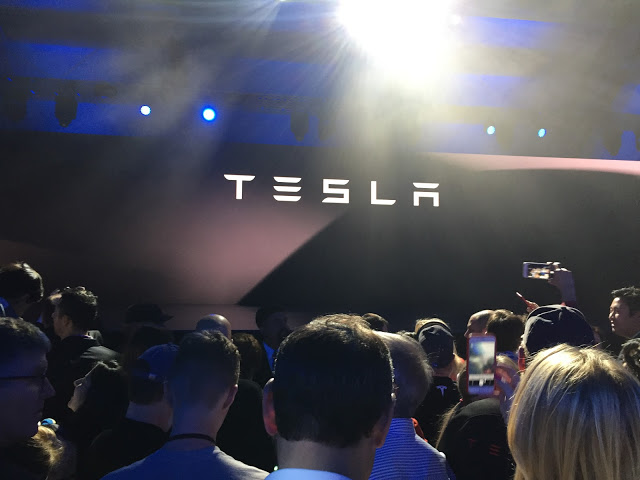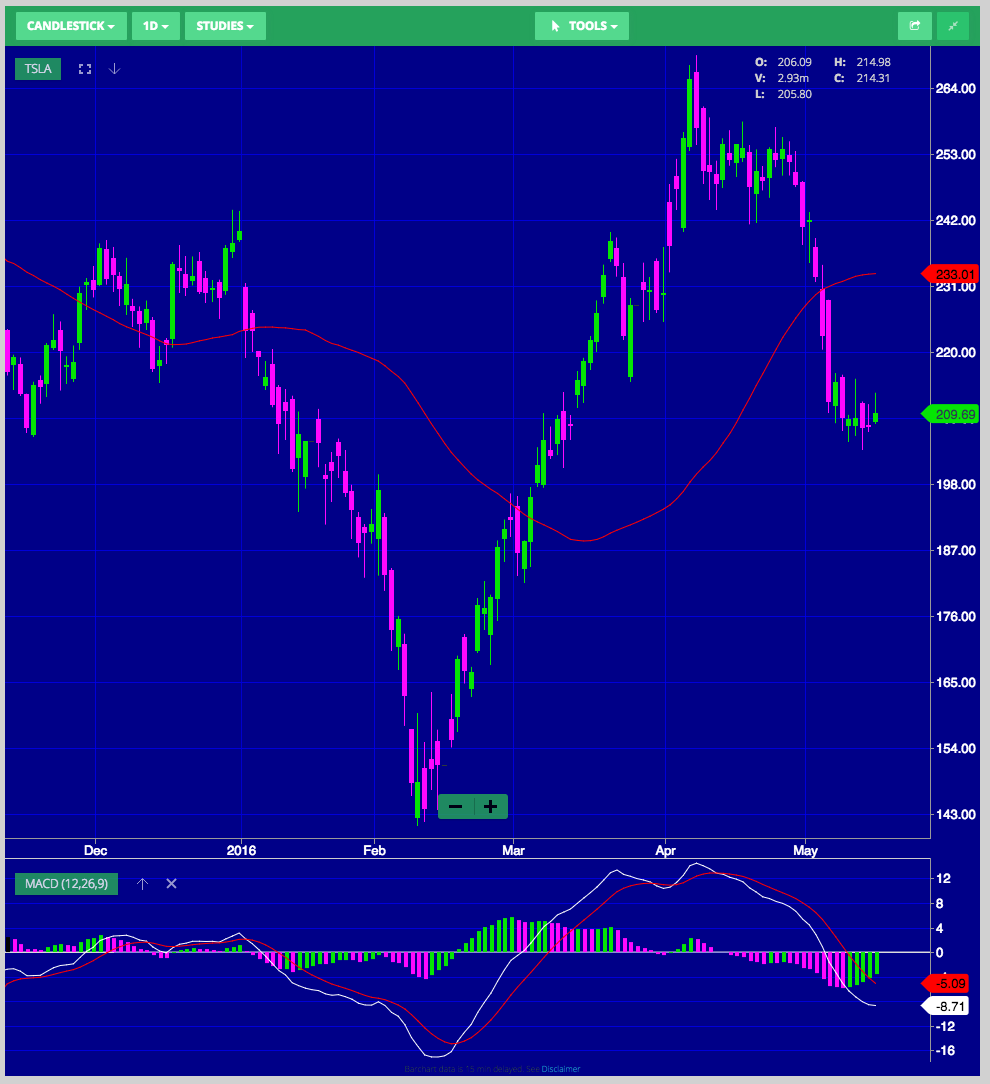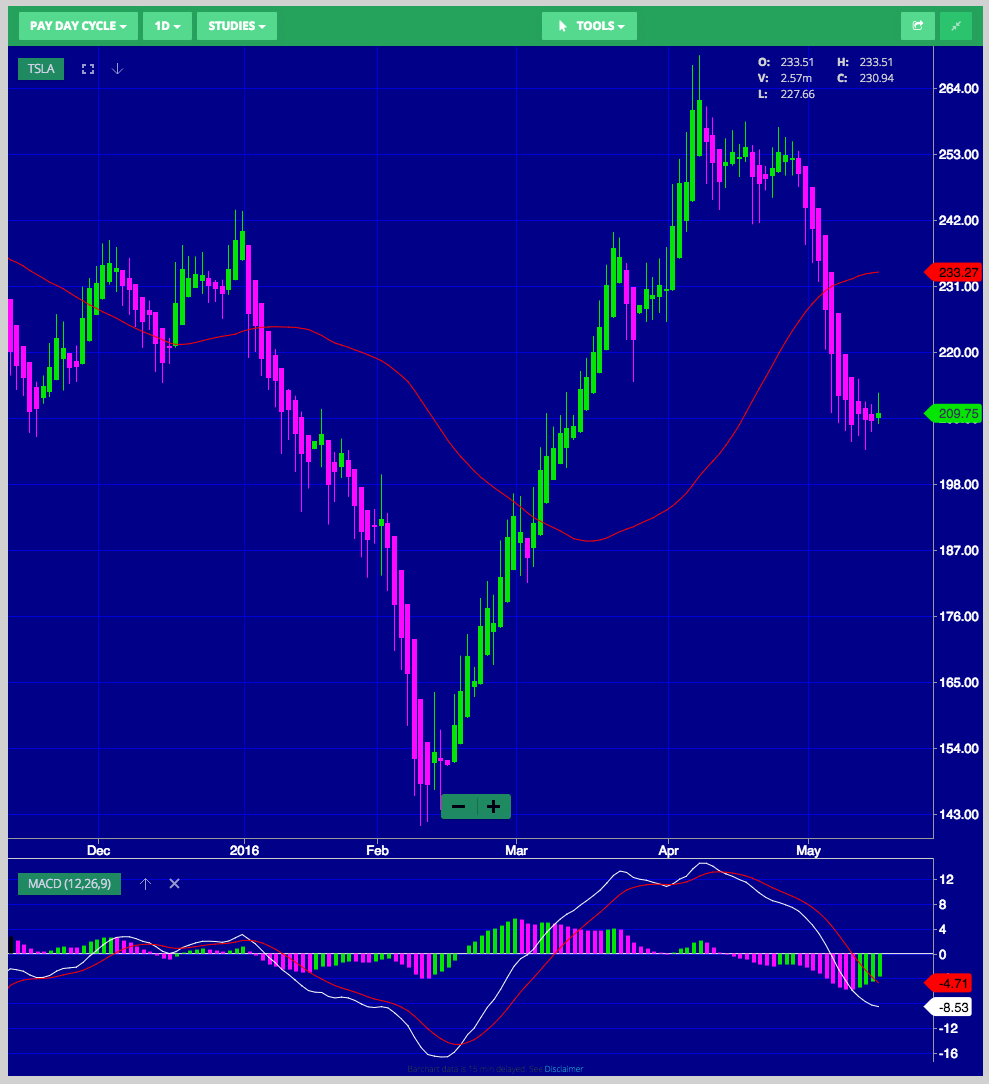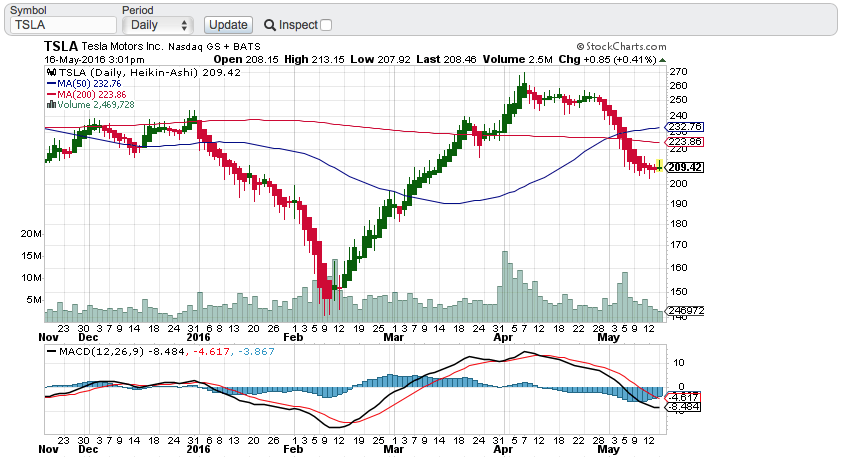Investor's Corner
Trending $TSLA: Remove the “noise”

Last week I introduced the MACD indicator. This week I will present a different way of displaying stock charts that works well with the MACD to help in forecasting future stock behavior.
Most profits and losses are generated when markets are trending. Market “noise” is simply all of the price data that distorts the picture of the underlying trend. This includes mostly small corrections and intraday volatility. Noise removal is one of the most important aspects of active trading. By employing noise-removal techniques, traders can avoid false signals and get a clearer picture of an overall trend.
The Heikin Ashi technique (“average bar” in Japanese) is one of many techniques used to remove noise and improve the isolation of trends to predict future prices.
Heikin Ashi charts are a type of candlestick chart that shares many characteristics with standard candlestick charts, but differs because of the values used to create each bar. I will not bore you with the formulas used to calculate the candlestick components (close, open, high, low). The Heikin Ashi formula factors in the current bar with an average of past bars in order to create a smoother trend. This process creates smoother price patterns that are much easier to read.
Daily Heikin Ashi charts are used to display “pay-day cycles” that display the daily trends, without the “noise.”
Take a look at the difference between the standard candlestick and the Heikin Ashi charts of TSLA stock for the past 5 months. First let’s take a look at the standard candlestick chart.
Now let’s take a look at the Heikin Ashi chart.
Notice that in the latter chart the Jan.-Feb. and the May downtrends are more clearly visible, as well as the Feb-March huge uptrend gain.
In my trading I combine pay-day-cycles with the MACD. I make sure that the pay-day-cycle has turned positive (colored green in the chart above), and then I wait for the MACD to cross to the bulls to initiate a probing bullish trade.
Taking a look at today’s situation, this may be the first day of a green Heikin Ashi bar after 12 red bars. I also notice that the MACD is starting to flatten. We may be starting to form a bottom, and this could be the beginning of a potential reversal in the downtrend in TSLA stock, so I will be watching closely for an entry point when both indicators turn positive. Notice that in general the pay-day-cycle turns positive before the MACD does.
Heikin Ashi charts are now provided by most trading platforms: Wallst.io (select Chart Type – Pay Day Cycle), TD Ameritrade’s Thinkorswim (select Style – Chart Type – Heikin Ashi, Daily), OptionHouse (select Style: Heikin Ashi, Range: 6 Months, Frequency: 1 Day).
Also StockCharts.com offers free Heikin Ashi charts (enter TSLA, Chart Attributes, Type Heikin-Ashi, Update).
One interesting pattern that formed at the closed today is a “Doji”: a Doji candlestick looks like a cross, inverted cross or plus sign, and forms where a security’s open and close of the day are virtually equal. This often can be the precursor of a reversal. Secondly, the recent 50-day MA (Moving Average) move above the 200-day MA occurred a couple of weeks ago (see the chart above), again another usual precursor of a forthcoming bullish trend. And lastly, TSLA has support at the 206 level, from last November 2015. All of these are reasons to be bullish on TSLA, especially for short-term swing traders.
Is $TSLA going to reverse and move back up or will it start to compress, i.e. go sideways like it did in April? What do you guys think?

Investor's Corner
Tesla stock closes at all-time high on heels of Robotaxi progress

Tesla stock (NASDAQ: TSLA) closed at an all-time high on Tuesday, jumping over 3 percent during the day and finishing at $489.88.
The price beats the previous record close, which was $479.86.
Shares have had a crazy year, dipping more than 40 percent from the start of the year. The stock then started to recover once again around late April, when its price started to climb back up from the low $200 level.
This week, Tesla started to climb toward its highest levels ever, as it was revealed on Sunday that the company was testing driverless Robotaxis in Austin. The spike in value pushed the company’s valuation to $1.63 trillion.
Tesla Robotaxi goes driverless as Musk confirms Safety Monitor removal testing
It is the seventh-most valuable company on the market currently, trailing Nvidia, Apple, Alphabet (Google), Microsoft, Amazon, and Meta.
Shares closed up $14.57 today, up over 3 percent.
The stock has gone through a lot this year, as previously mentioned. Shares tumbled in Q1 due to CEO Elon Musk’s involvement with the Department of Government Efficiency (DOGE), which pulled his attention away from his companies and left a major overhang on their valuations.
However, things started to rebound halfway through the year, and as the government started to phase out the $7,500 tax credit, demand spiked as consumers tried to take advantage of it.
Q3 deliveries were the highest in company history, and Tesla responded to the loss of the tax credit with the launch of the Model 3 and Model Y Standard.
Additionally, analysts have announced high expectations this week for the company on Wall Street as Robotaxi continues to be the focus. With autonomy within Tesla’s sights, things are moving in the direction of Robotaxi being a major catalyst for growth on the Street in the coming year.
Elon Musk
Tesla needs to come through on this one Robotaxi metric, analyst says
“We think the key focus from here will be how fast Tesla can scale driverless operations (including if Tesla’s approach to software/hardware allows it to scale significantly faster than competitors, as the company has argued), and on profitability.”

Tesla needs to come through on this one Robotaxi metric, Mark Delaney of Goldman Sachs says.
Tesla is in the process of rolling out its Robotaxi platform to areas outside of Austin and the California Bay Area. It has plans to launch in five additional cities, including Houston, Dallas, Miami, Las Vegas, and Phoenix.
However, the company’s expansion is not what the focus needs to be, according to Delaney. It’s the speed of deployment.
The analyst said:
“We think the key focus from here will be how fast Tesla can scale driverless operations (including if Tesla’s approach to software/hardware allows it to scale significantly faster than competitors, as the company has argued), and on profitability.”
Profitability will come as the Robotaxi fleet expands. Making that money will be dependent on when Tesla can initiate rides in more areas, giving more customers access to the program.
There are some additional things that the company needs to make happen ahead of the major Robotaxi expansion, one of those things is launching driverless rides in Austin, the first city in which it launched the program.
This week, Tesla started testing driverless Robotaxi rides in Austin, as two different Model Y units were spotted with no occupants, a huge step in the company’s plans for the ride-sharing platform.
Tesla Robotaxi goes driverless as Musk confirms Safety Monitor removal testing
CEO Elon Musk has been hoping to remove Safety Monitors from Robotaxis in Austin for several months, first mentioning the plan to have them out by the end of 2025 in September. He confirmed on Sunday that Tesla had officially removed vehicle occupants and started testing truly unsupervised rides.
Although Safety Monitors in Austin have been sitting in the passenger’s seat, they have still had the ability to override things in case of an emergency. After all, the ultimate goal was safety and avoiding any accidents or injuries.
Goldman Sachs reiterated its ‘Neutral’ rating and its $400 price target. Delaney said, “Tesla is making progress with its autonomous technology,” and recent developments make it evident that this is true.
Investor's Corner
Tesla gets bold Robotaxi prediction from Wall Street firm
Last week, Andrew Percoco took over Tesla analysis for Morgan Stanley from Adam Jonas, who covered the stock for years. Percoco seems to be less optimistic and bullish on Tesla shares, while still being fair and balanced in his analysis.

Tesla (NASDAQ: TSLA) received a bold Robotaxi prediction from Morgan Stanley, which anticipates a dramatic increase in the size of the company’s autonomous ride-hailing suite in the coming years.
Last week, Andrew Percoco took over Tesla analysis for Morgan Stanley from Adam Jonas, who covered the stock for years. Percoco seems to be less optimistic and bullish on Tesla shares, while still being fair and balanced in his analysis.
Percoco dug into the Robotaxi fleet and its expansion in the coming years in his latest note, released on Tuesday. The firm expects Tesla to increase the Robotaxi fleet size to 1,000 vehicles in 2026. However, that’s small-scale compared to what they expect from Tesla in a decade.
Tesla expands Robotaxi app access once again, this time on a global scale
By 2035, Morgan Stanley believes there will be one million Robotaxis on the road across multiple cities, a major jump and a considerable fleet size. We assume this means the fleet of vehicles Tesla will operate internally, and not including passenger-owned vehicles that could be added through software updates.
He also listed three specific catalysts that investors should pay attention to, as these will represent the company being on track to achieve its Robotaxi dreams:
- Opening Robotaxi to the public without a Safety Monitor. Timing is unclear, but it appears that Tesla is getting closer by the day.
- Improvement in safety metrics without the Safety Monitor. Tesla’s ability to improve its safety metrics as it scales miles driven without the Safety Monitor is imperative as it looks to scale in new states and cities in 2026.
- Cybercab start of production, targeted for April 2026. Tesla’s Cybercab is a purpose-built vehicle (no steering wheel or pedals, only two seats) that is expected to be produced through its state-of-the-art unboxed manufacturing process, offering further cost reductions and thus accelerating adoption over time.
Robotaxi stands to be one of Tesla’s most significant revenue contributors, especially as the company plans to continue expanding its ride-hailing service across the world in the coming years.
Its current deployment strategy is controlled and conservative to avoid any drastic and potentially program-ruining incidents.
So far, the program, which is active in Austin and the California Bay Area, has been widely successful.











